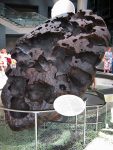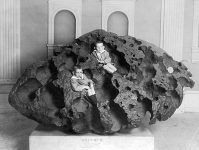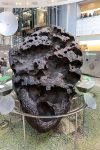Willamette
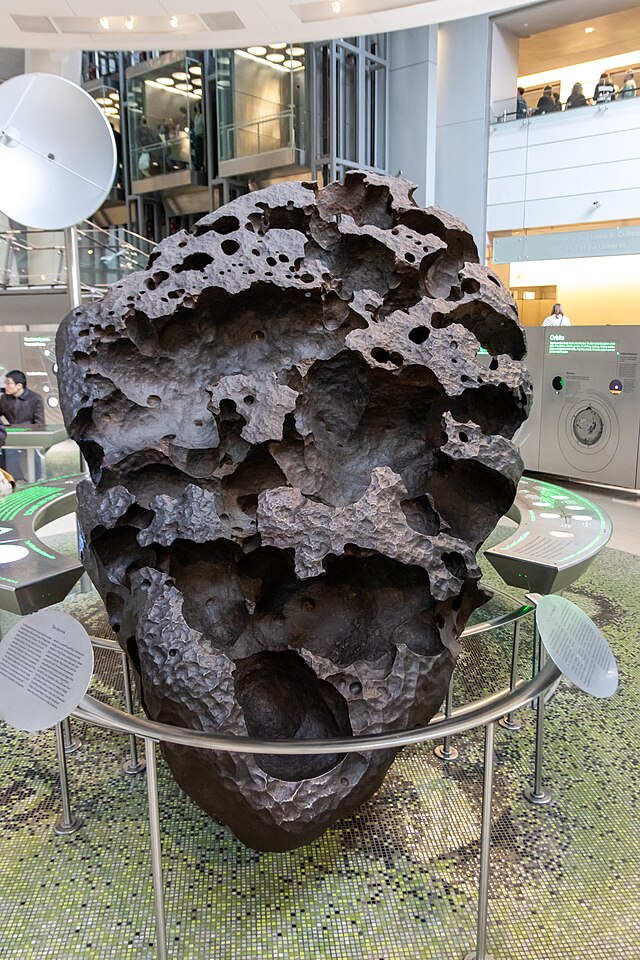
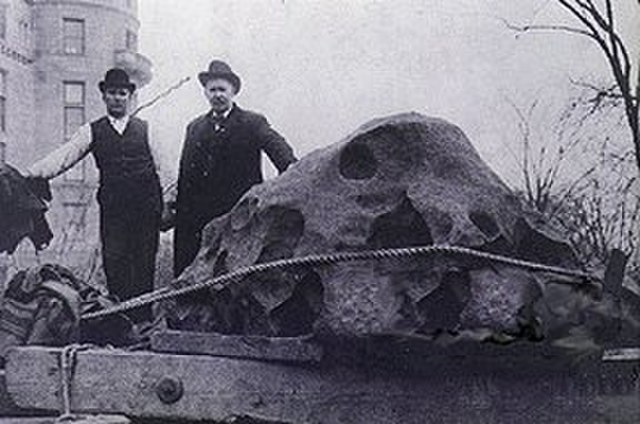
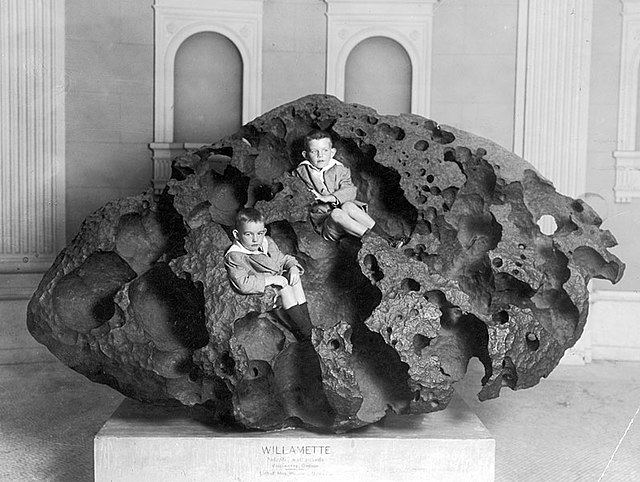
Willamette
The Willamette Meteorite is a fascinating natural relic that has captivated scientists and the public alike for over a century. Discovered in the state of Oregon, USA, near the Willamette River in the late 19th century, this iron-nickel meteorite is renowned for its massive size, unusual shape, and unique history.
Discovery and Characteristics:
The Willamette Meteorite was discovered in 1902 by Ellis Hughes, a Scottish immigrant who was prospecting for iron in the Tualatin Valley. The meteorite immediately stood out due to its immense size and distinctive shape. Weighing approximately 15.5 tons (14,100 kilograms), it measures about 10 feet (3 meters) in length and 6.5 feet (2 meters) in width at its widest point. Its shape is irregular, resembling that of a loaf of bread or a roughly triangular mass, typical of meteorites that have experienced significant atmospheric ablative erosion during their descent through the Earth’s atmosphere.
Composition and Scientific Significance:
Scientific analysis has revealed that the Willamette Meteorite is composed primarily of iron (about 91%) and nickel (about 7.62%), with trace amounts of cobalt, phosphorus, and other elements. It is classified as a type IIIAB iron meteorite, indicating that it originated from the core or mantle of a differentiated asteroid. The meteorite’s composition provides valuable insights into the early solar system’s chemical makeup and processes, making it a crucial specimen for scientific study.
Cultural and Historical Context:
Beyond its scientific importance, the Willamette Meteorite holds significant cultural and historical value. Indigenous peoples of the region, particularly the Clackamas and other tribes of the Confederated Tribes of Grand Ronde, had long revered the meteorite as a sacred object before its “discovery” by European settlers. For these tribes, the meteorite was a spiritual and ceremonial landmark, reflecting the rich cultural connections indigenous peoples have with celestial events and natural phenomena.
Controversial History and Ownership Disputes:
The ownership and custody of the Willamette Meteorite have been subjects of controversy and legal disputes over the years. Shortly after its discovery, the Oregon Iron and Steel Company, owned by the pioneering industrialist Henry Villard, claimed ownership of the meteorite, intending to display it for public viewing. However, disagreements over ownership persisted, involving legal battles and public outcry.
Public Display and Legacy:
In 1906, the American Museum of Natural History in New York City acquired the Willamette Meteorite, where it remains on public display to this day. Its acquisition marked a pivotal moment in the popularization of meteorites as objects of scientific and public interest. The meteorite continues to attract visitors and researchers alike, serving as a tangible link to the cosmos and a symbol of humanity’s curiosity about the universe.

